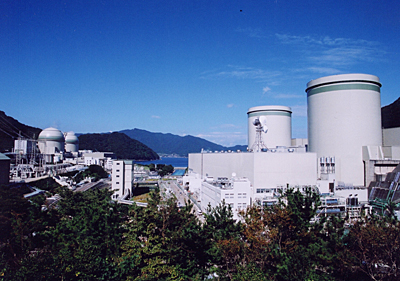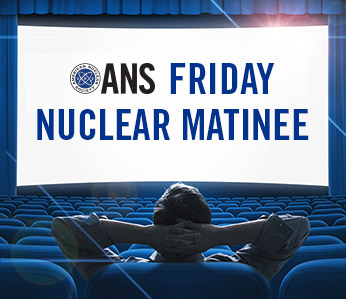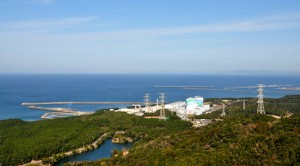Brexit and the Future of British Nuclear Power
by Andrew Reimers

A message from NV5, Inc.
Seconds Matter: Rethinking Nuclear Facility Security for the Modern Threat Landscape
by Andrew Reimers
On Wednesday, ANS Nuclear Cafe published a piece on Small Modular Reactors. Today, we present a short video covering some of the progress on Argentina's CAREM SMR, which was featured some time ago right here on this blog when the project to build it was launched.
In recent years the allure of small, flexible, easy to construct and operate nuclear plants incorporating small modular reactors (SMR) have continued to grow for a host of reasons. Here in the United States, we've watched the saga of the SMR unfold fairly slowly over the last few years, as companies have entered the fray to various levels of success and have achieved varied degrees of progress.* Now, the latest large step in getting these small and versatile reactors into the worldwide commercial market has been taken - by an effort involving Saudi Arabia and South Korea.

Kansai Electric Power's Takahama Nuclear Generating Station. Unit 1 and 2 are on the right; Units 3 and 4 are in the background on the left. Courtesy Kansai Electric Power.
On July 12, the Otsu District Court in Japan made a significant decision regarding the future of Kansai Electric Power's Takahama nuclear station when it upheld a previous lower court injunction against the operation of Units 3 and 4 at that site. The district court had received a petition from just over two dozen intervenors in Shiga Prefecture earlier this year; legal wrangling ensued, with Kansai Electric filing an objection which ultimately today appears to have fallen on deaf ears. As it now stands, there is a provisional injunction against the startup of these two plants.
by Will Davis; information for this report obtained both from the 2016 ANS Annual Meeting session on Prototype Gen-IV Reactors and from representatives of the Korea Atomic Energy Research Institute (KAERI), its subsidiary Sodium-cooled Fast Reactor Development Agency (SFRA), KEPCO Engineering & Construction,+ and Argonne National Laboratory.
Opinion by Will Davis for ANS Nuclear Cafe.
by J.H. Stewart Melville III
http://www.eenews.net/tv/videos/2134 Today's matinee: an OnPoint interview with pronuclear environmentalist Michael Shellenberger, as he discusses the benefits nuclear energy has on the economy and the environment.
On May 26, 2016 at precisely 2:16 a.m., what will probably be the final large unit in the Tennessee Valley Authority (TVA) nuclear fleet - Watts Bar Nuclear Plant, Unit 2 - achieved its initial criticality. This event opens the final chapter of the extended construction history of this unit, and paves way for another gigawatt of generating capacity (in nameplate rating) to be added to TVA's generating portfolio.

Our Friday Matinee for today is the latest of the excellent Vogtle Timeline videos produced by Georgia Power to document the construction progress of Vogtle Units 3 and 4. The series stands as one of the most thorough video documentations of nuclear plant construction ever filmed, and this latest update is every bit as informative as its predecessors.
This story was originally posted in What's New section of ANS.org.
In 1959, a small community in Ohio completed a lobbying effort to bring a modern marvel to town-a nuclear power plant. Piqua, a town of less than 20,000 people, took its place on the broader news map, and set its sights on the stars. The journey would stop short of the citizens' dreams.
Byline: the Nuclear Upended Team
Recently, the Nuclear Regulation Authority of Japan announced that Shikoku Electric Power Company's Ikata Unit 3 had cleared the new, three-step process required to restart nuclear plants in Japan. This latest announcement also came with the closely coupled announcement that Shikoku would permanently close and decommission another nuclear unit, more or less in trade.

This week's Friday Matinee features an update on the construction progress at Plant Vogtle's Units 3 and 4, the new AP1000 units being built in Georgia. This is the First Quarter 2016 update and runs less than ten minutes.
Will Davis recently wrote an article on the Cafe: Chernobyl Through the Mist of Decades with a look back, lessons learned, and life now. But today, April 26, marks the 30 year anniversary of the Chernobyl accident. We encourage everyone to take time to remember Chernobyl, and to review some of the promising information that has been written about the area now, as the world moves forward.
 The 306th edition of the Nuclear Energy Blog Carnival has posted at Neutron Bytes.
The 306th edition of the Nuclear Energy Blog Carnival has posted at Neutron Bytes.
Today's video is brought to us by Third Way, and takes a closer look at the energy sources, and why we need to add nuclear into the energy mix. Wind and solar are just not able to do it alone and needs nuclear to get the level of electricity we need without destroying our environment. "So, let's play it smart and develop a mix of low-carbon solutions, because we won't get a second chance to stop climate change." Today, #EarthDay (and everyday), let's remember to bring good things to our planet.

Sendai Nuclear Power Plant, courtesy Kyushu Electric Power Co.
Two significant earthquakes have struck Kumamoto Prefecture in Western Japan within a week, and the Japanese nuclear plant owners and their regulator (the Nuclear Regulation Authority, or NRA) have responded to some reignited fears over nuclear plants in this region by beginning to publish reports and data. The data show that at no point was any of the plants in danger.